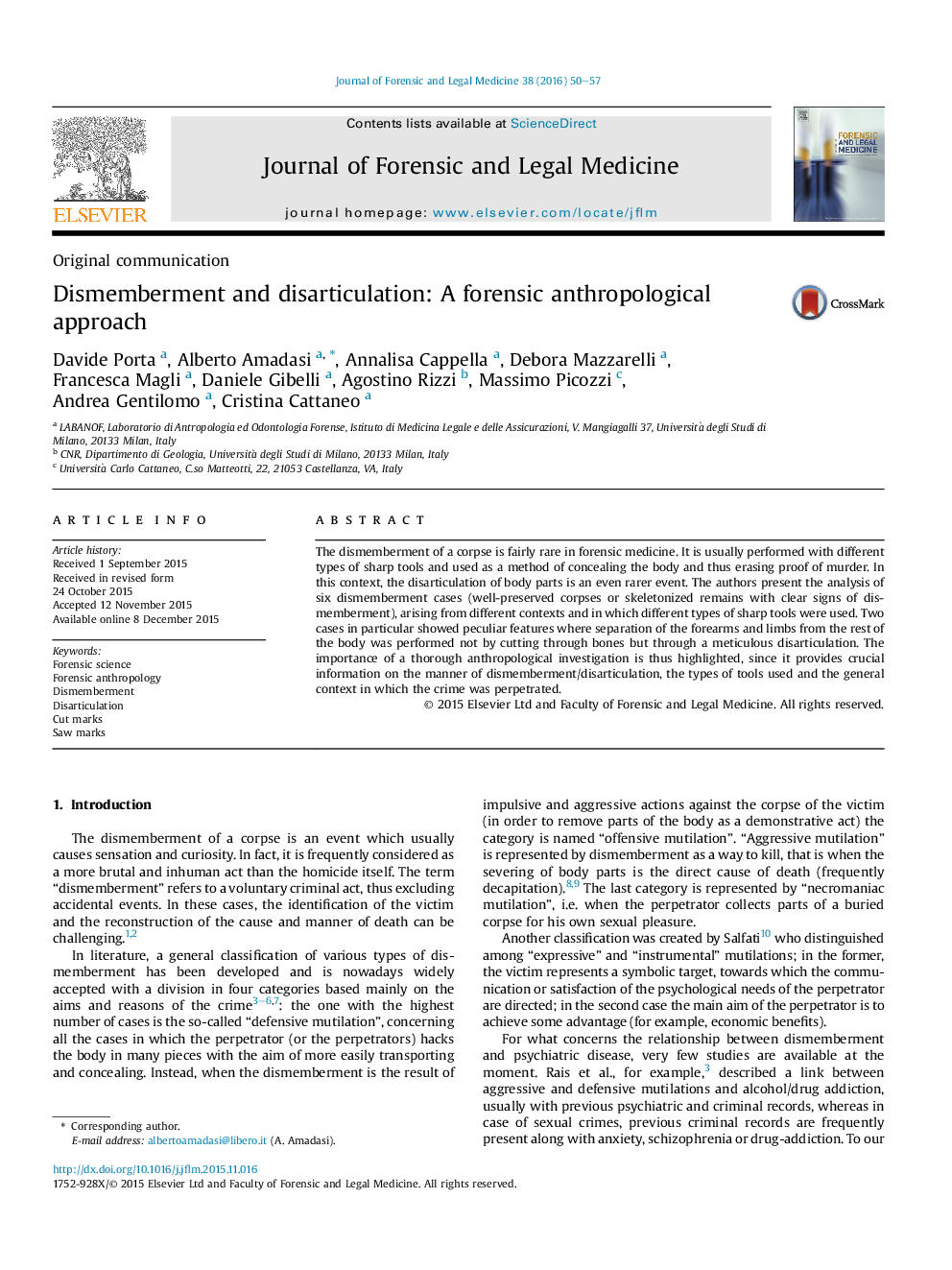| کد مقاله | کد نشریه | سال انتشار | مقاله انگلیسی | نسخه تمام متن |
|---|---|---|---|---|
| 101725 | 161290 | 2016 | 8 صفحه PDF | دانلود رایگان |
• Dismemberment cases may be difficult for a correct forensic analysis.
• Different methods of survey provide crucial clues for the manner of dismemberment.
• Along with classic dismemberment, the disarticulation of body parts may be found.
• A complete and thorough anthropological analysis of the remains is crucial.
The dismemberment of a corpse is fairly rare in forensic medicine. It is usually performed with different types of sharp tools and used as a method of concealing the body and thus erasing proof of murder. In this context, the disarticulation of body parts is an even rarer event. The authors present the analysis of six dismemberment cases (well-preserved corpses or skeletonized remains with clear signs of dismemberment), arising from different contexts and in which different types of sharp tools were used. Two cases in particular showed peculiar features where separation of the forearms and limbs from the rest of the body was performed not by cutting through bones but through a meticulous disarticulation. The importance of a thorough anthropological investigation is thus highlighted, since it provides crucial information on the manner of dismemberment/disarticulation, the types of tools used and the general context in which the crime was perpetrated.
Journal: Journal of Forensic and Legal Medicine - Volume 38, February 2016, Pages 50–57
